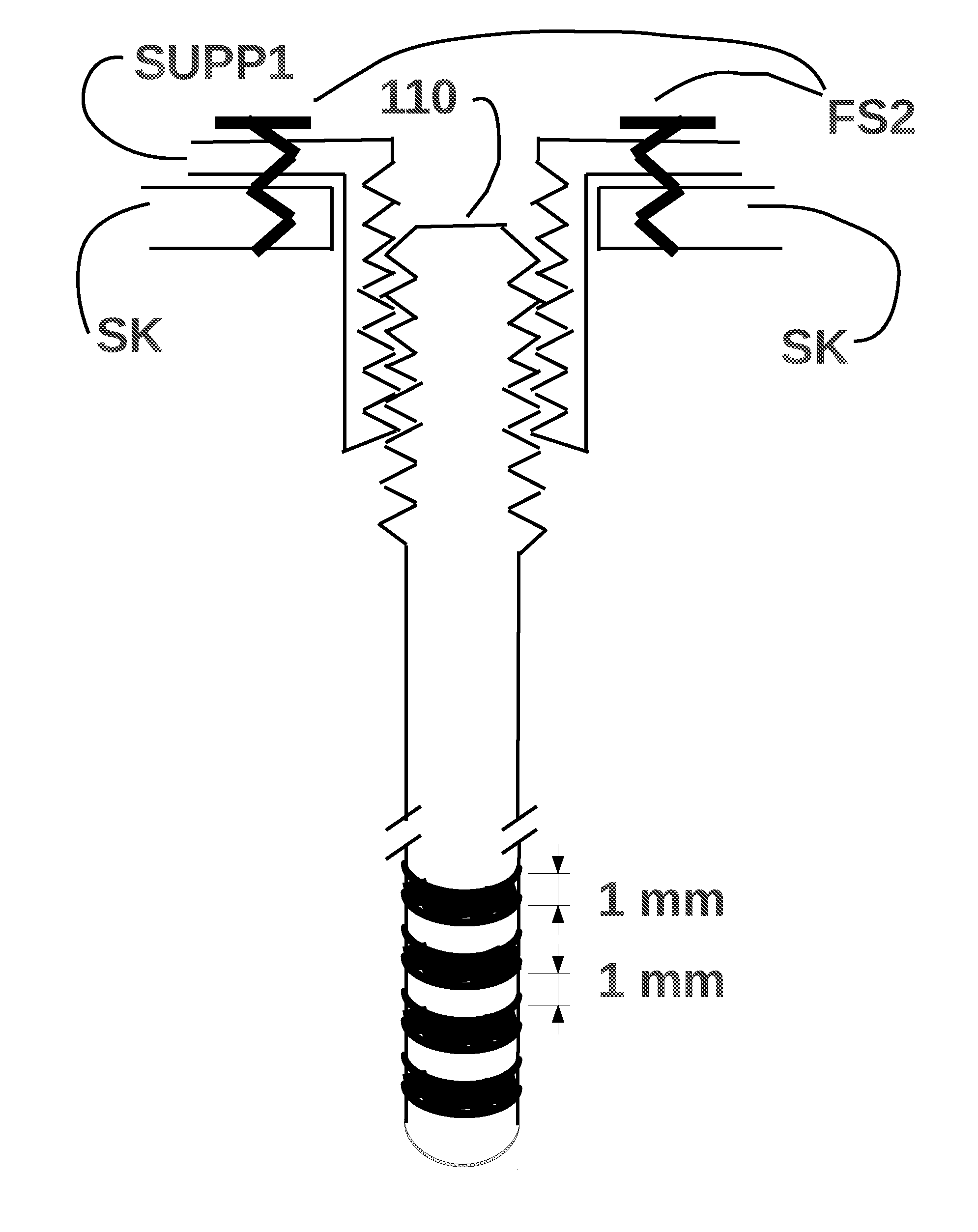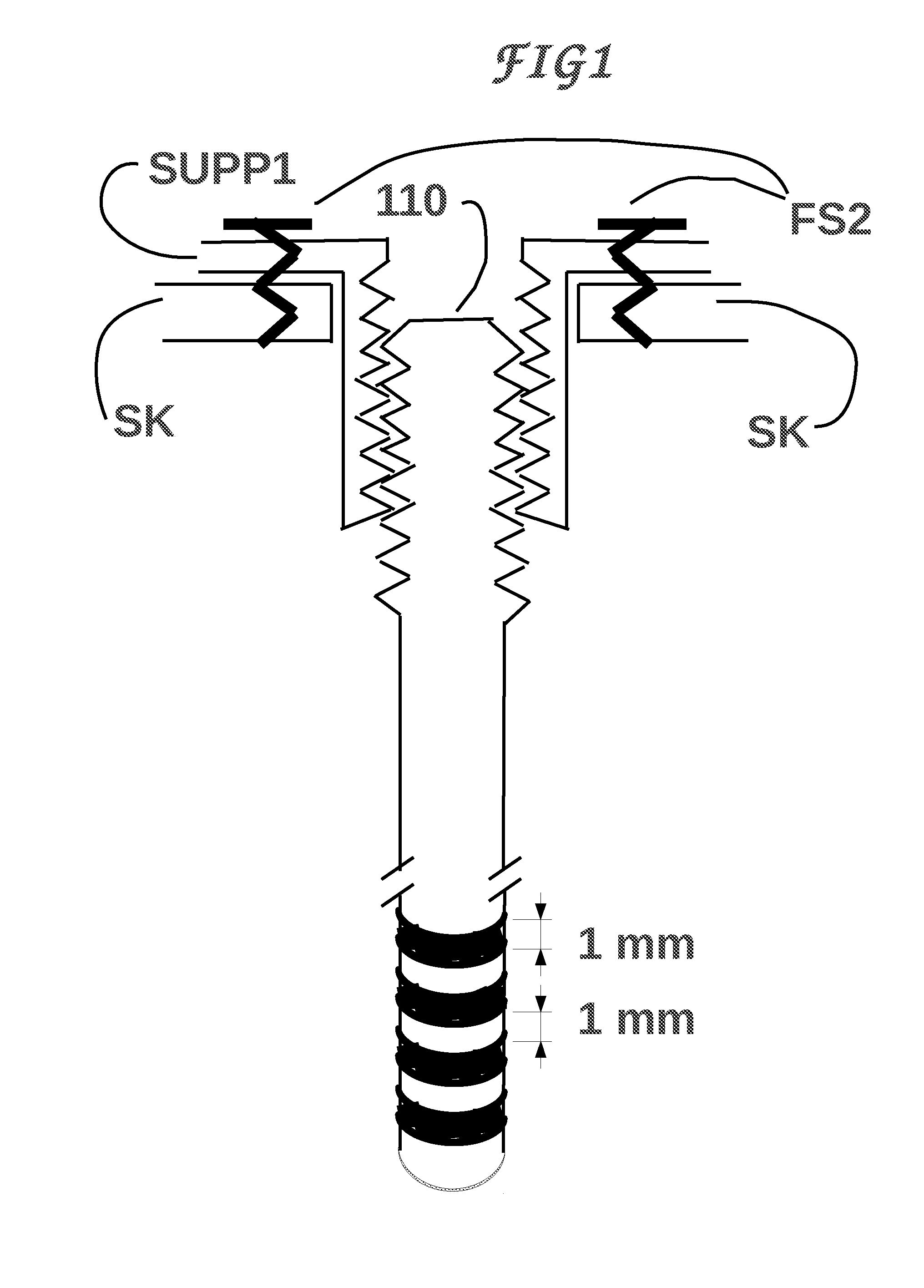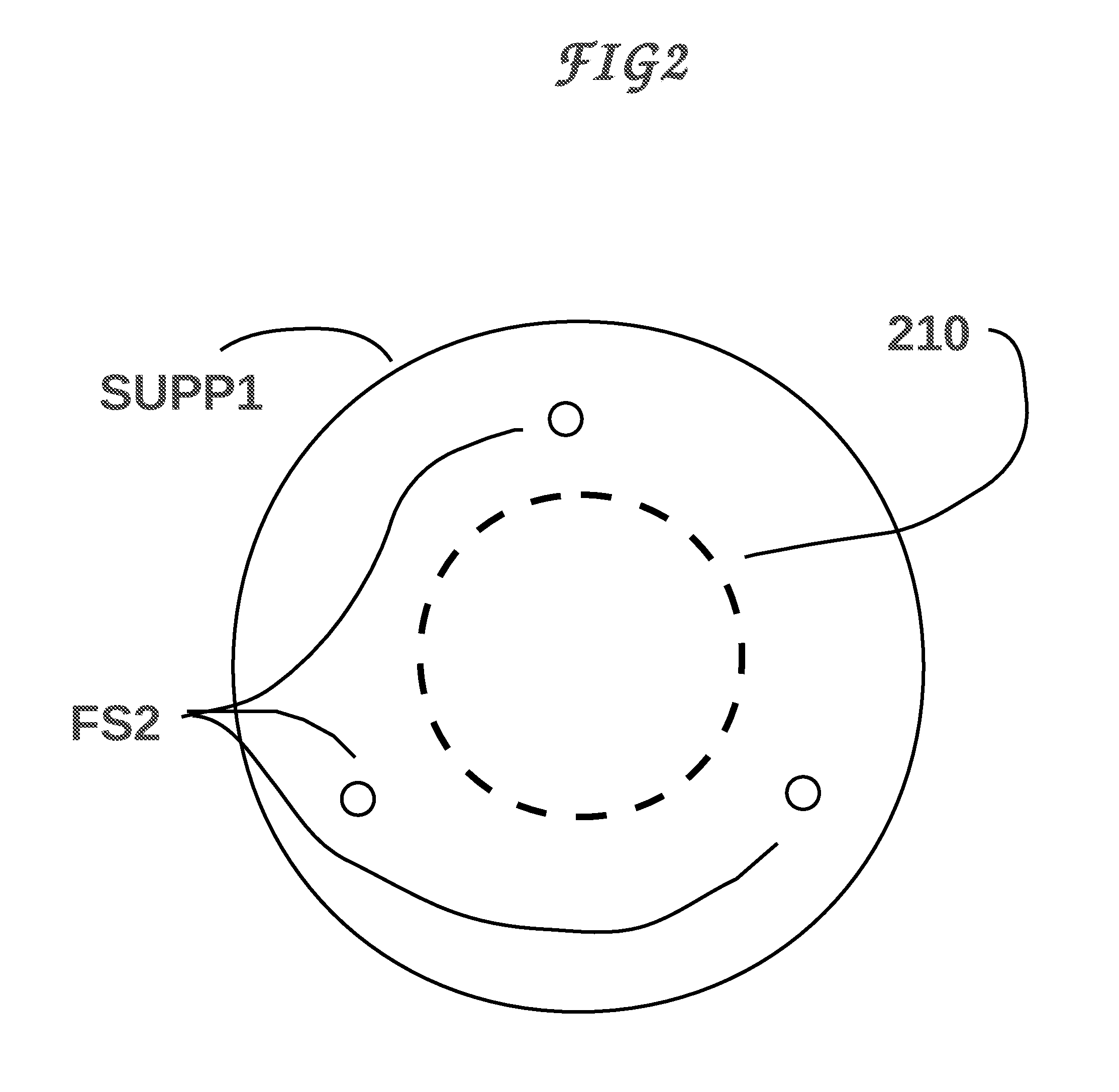Device and means for adjusting the position of DBS brain and other neural and muscular implants
a brain and muscle implant technology, applied in the field of cellular electrical stimulation, can solve the problems of not finding a solution for this problem, unable to offer adjustment on the stimulation site, and difficulty for neurosurgeons to place the stimulating electrode in the correct place, so as to reduce side effects
- Summary
- Abstract
- Description
- Claims
- Application Information
AI Technical Summary
Benefits of technology
Problems solved by technology
Method used
Image
Examples
embodiment
Preferred Embodiment
FIG. 1, FIG. 2 FIG. 2a, FIG. 3, FIG. 4, FIG. 6, FIGS. 8, 8a, 8b, 8c, FIG. 9, FIG. 10 and FIGS. 12a,b
[0043]We will describe a main embodiment of our invention for use in DBS (Deep Brain Stimulation). Variations for use in more superficial areas of the brain, or for use in spinal cord, or for use as TENS devices (Transcutaneous Electrical Nerve Stimulation, pain control), or for use as heart pacemakers, etc. will be apparent to the ones skilled in the relevant arts.
[0044]We firstly make a shorter description intended for engineers and technicians, then a longer description for the layperson, or a person who is familiar with some of the aspects of the invention but not familiar with all of its aspects. Note that the invention involves more than one fields of expertise, so the number of people familiar with all its aspects is small.
[0045]Explanation for engineers and technicians. The theory discussed here is believed to be true, but the invention is not dependent on...
PUM
 Login to View More
Login to View More Abstract
Description
Claims
Application Information
 Login to View More
Login to View More - R&D
- Intellectual Property
- Life Sciences
- Materials
- Tech Scout
- Unparalleled Data Quality
- Higher Quality Content
- 60% Fewer Hallucinations
Browse by: Latest US Patents, China's latest patents, Technical Efficacy Thesaurus, Application Domain, Technology Topic, Popular Technical Reports.
© 2025 PatSnap. All rights reserved.Legal|Privacy policy|Modern Slavery Act Transparency Statement|Sitemap|About US| Contact US: help@patsnap.com



